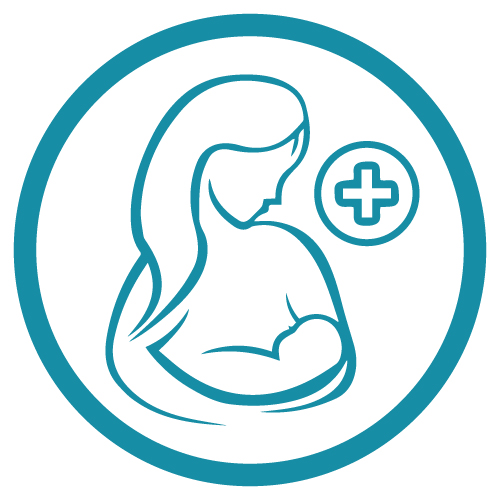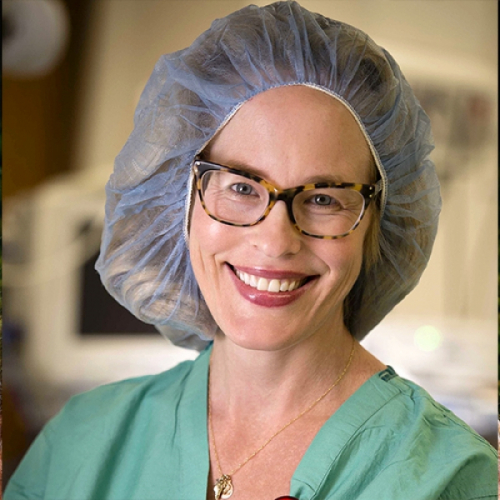
Breastfeeding Medicine: Advancing Your Level of Care Lecture Pack
Skilled support of breastfeeding is a crucial part of providing comprehensive care to new families. An extensive body of research highlights the importance of breastfeeding for both the physical and psychological health of parent and child. With the loss of extended family support and experience with breastfeeding in many areas, it is more important than ever for physicians and other health care providers to have a strong understanding of both the science and the clinical skills needed to ensure successful breastfeeding. Join us to explore the latest in breastfeeding medicine and advance your clinical practice. Learn more about prenatal colostrum extraction, the effects of labour anaesthesia and analgesia on breastfeeding, how to incorporate breastfeeding support into your practice, the diagnostic workup and management of low milk supply and more!
This lecture was originally offered as part of the GOLD Obstetrics conference 2020.


Dr. Pound is a Clinical Investigator at the CHEO Research Institute, an Assistant Professor in the Department of Pediatrics at the University of Ottawa, and the Resident Research Coordinator for the Pediatric Residency Program at the University of Ottawa. She is a specialist in the field of Consulting Pediatrics and has presented at national meetings, and published in the area of breastfeeding, and has authored a position statement on breastfeeding for the Canadian Pediatric Society.
Topic: Supporting Exclusive Breastfeeding; What's A Physician Got To Do - [View Abstract]
1. Discuss the importance of breastfeeding support by physicians.
2. Examine breastfeeding knowledge gaps identified in recent research about Canadian physicians.
3. Review some quick ways to address common breastfeeding issues.
4. Discuss some evidence-based resources specifically created for Canadian physicians and how they may be implemented in other areas.
In this presentation, Dr Pound will discuss the evidence supporting the importance of physician support, in order to encourage and maintain successful breastfeeding. An overview of recent research of Canadian physicians’ attitudes, comfort and knowledge with regards to breastfeeding will be provided, with a particular emphasis on specific knowledge gaps. Clinical scenarios will be discussed, in which ways to address breastfeeding difficulties will be examined, from the physician’s standpoint. Common universal myths and pitfalls will be addressed, and ways to efficiently integrate breastfeeding assessment into one’s clinical practice.


Dr. Yvonne LeFort has been a family physician for over 25 years and is based in Auckland New Zealand. She is a graduate of Dalhousie Medical School and University of Calgary Family Medicine in Canada. She is a Fellow of the Academy of Breastfeeding Medicine since 2013.
She has been involved in helping breastfeeding mothers and babies for 18 years. Her specific interest in tongue tie and its management was nurtured through her association with Dr. Evelyn Jain who was a true pioneer in the recognition of the importance of breastfeeding and the impact that untreated ankyloglossia can cause on the breastfeeding experience.
Dr. LeFort has established a private Breastfeeding Clinic in Auckland New Zealand providing comprehensive lactation care for mothers and their infants. Her service includes the management of tongue tie and involves a lactation consultant for parallel breastfeeding support.
1. Describe how promoting and protecting breastfeeding is crucial in medical practice,
2. Assess the normal breastfeeding parameters throughout infancy
3. Explain the ""first do no harm"" approach to breastfeeding patients' concerns
4. Analyze differing approaches to common breastfeeding clinical problems, including some unique situations involving the breastfeeding dyad
Promoting and protecting breastfeeding is crucial in medical practice. Learn more about general principles when approaching clinical scenarios involving breastfeeding dyads and common diagnoses and management strategies. Learn how to assess the normal breastfeeding parameters throughout infancy and the “first do no harm” approach to breastfeeding patients’ concerns. I will review some special circumstances and how to advise your breastfeeding patient in such circumstances.


Sarah Reece-Stremtan MD is an associate professor of pediatrics and anesthesiology at the George Washington University in Washington DC. Her clinical practice is centered at Children's National Hospital in DC, where she works as a pediatric anesthesiologist, acute pain physician, and acupuncturist. She has particularly strong interests in perioperative preservation of breastfeeding, with specific expertise in safety of anesthesia and analgesia medications used by breastfeeding mothers. She has spoken at Congressional Briefings on the need for enhanced research into the use of medications by breastfeeding and pregnant women, and sits on working group #4 within a federal task force developed to enhance Research Specific to Pregnant Women and Lactating Women (PRGLAC).
She has long been involved with the Academy of Breastfeeding Medicine, authoring multiple clinical protocols, chairing various committees, and most recently serving as Treasurer for 2 terms after 5 years as a member of the Board of Directors.
Objective 1. List the major types of pain relief available to mothers in labour and postpartum.
Objective 2. Discuss possible effects on infant breastfeeding initiation related to systemic medications used by labouring mothers.
Objective 3. List specific challenges in breastfeeding related to cesarean delivery
Many women plan to use various pain medications during labour, with epidural analgesia being the most common type of pain relief utilized in many North American hospitals. Medications used for pain relief during labour cross transplacentally to the infant, with varying effects demonstrated on infants and mothers with regards to breastfeeding. Here we will take a closer look at what is involved in pain transmission signals, the medications that help with pain relief during labour, and the effects of these medications on initiation of breastfeeding. We will discuss issues relating to cesarean delivery, and we will also spend a little time at the end reviewing considerations around general anesthesia for breastfeeding mothers.


Katrina B. Mitchell, MD is a board-certified general surgeon, fellowship-trained breast surgical oncologist, and international board certified lactation consultant (IBCLC) whose practice includes the care and surgery of women with breast cancer and benign breast disease. She also treats maternal complications of lactation, and has a special interest in pregnancy and postpartum breast cancer. She resides in Santa Barbara, California and practices at the Ridley Tree Cancer Center at Sansum Clinic. She enjoys reading, traveling, and spending time with her son at the beach. More information about her clinical and educational interests is available at katrinamitchell.org.
Objective 1: Describe the complex innervation of the breast and explain why referred pain from deep in the breast to the nipple-areolar complex and reverse is so common.
Objective 2: List the most common causes of breast and nipple pain and the lack of evidence for fungal infections as a significant contributor.
Objective 3: Explain the overlap between perinatal mood and anxiety disorders and chronic pain in breastfeeding.
This lecture reviews nipple and breast pain during pregnancy and both the early and late postpartum periods. It describes the anatomy and physiology of the breast and nipple areolar complex, and explores why pain during pregnancy and lactation is so common. Specific topics include the relationship between engorgement and infant latch; pump and other nipple trauma; hypo- and hyperlactation and how pain presents in these populations; vasospasm; dermatitis; nipple blebs; and, mastitis and plugging. The lecture also covers infant considerations and defines the lack of evidence for fungal infections as a significant contributor to pain. It delineates identification and treatment of functional pain and overlap of perinatal mood and anxiety disorders with pain.


Mariana Colmenares Castano was born in Mexico City, and from an early age she was fascinated by animals and nature.She studied medicine at the National University of Mexico (UNAM), and foundher passion as a pediatrician doing her residency at the National Pediatric Institute. When her first child was born she witnessed the lack of knowledge and commitment to breastfeeding within the medical profession, and so she decided to specialize in breastfeeding medicine. She certified as a Lactation Consultant (IBCLC) in 2011.Mariana is a member of the International Lactation Consultant Association, the Academy of Breastfeeding Medicine, and a proud founding member of the National Lactation Consultant Association of Mexico (ACCLAM), where she served on the Board of Directors as Education Coordinator (2014-2019). She is part of board director for the Academy of Breastfeeding Medicine for a 3 year period (2019-2022) and recently named as secretary for the Academy of Breastfeeding Medicine. Mariana is a member of the team for Breastfeeding Country Index BFCI, a project from Yale University and Universidad Iberoamericana. She is consultant for the National Health Institute in Mexico and has collaborated with UNICEF in breastfeeding projects and part of the steering committee for the WHO. She has spoken at national and international conferences, co-published numerous articles and co-authored a chapter for the National Academy of Medicine. At the moment she is a Clinical Fellow in Community Paediatrics in London.
Topic: Breastfeeding The Baby With Congenital Heart Disease - [View Abstract]
Topic: Breastfeeding with Insufficient Glandular Tissue - [View Abstract]
Topic: Clinical Assessment and Management of Jaundice in the Newborn - [View Abstract]
Topic: Oral Colostrum Care as an Immunological Intervention in the NICU - [View Abstract]
Objective 1: Describe what the literature says about antenatal breastmilk expression
Objective 2: Discuss the complexity of induction of labor.
Objective 3: Describe useful tools for mothers and health professional for antenatal breastmilk expression.
Antenatal breastmilk expression may be suggested to mothers, including mothers with diabetes and obesity to improve breastfeeding and maternal and infant outcomes postpartum. It can be a tool for use in these special circumstances, collecting colostrum prenatally can permit supplementation of newborns at risk for hypoglycemia at birth, reducing the use of formula. It is important also to know that teaching mothers hand expression techniques prenatally improves breastfeeding rates. Other clinical cases that can benefit from this practice are women with insufficient glandular tissue, polycystic ovaries, and mothers who have breast surgery. Learn more about the current literature on antenatal milk extraction, the complexity of labour induction and whether there is any truth to the belief that it is not possible to stimulate the nipples during pregnancy because it could start labor, and how and when to implement antenatal milk extraction in practice.


Divya Sinha Parikh MD, IBCLC, FAAP is a board certified pediatrician practicing in Columbus, OH. She received her medical training at The University of Pittsburgh School of Medicine and completed her residency in general pediatrics at Rainbow Babies and Children’s Hospital at Case Western Reserve University. She formerly served on the Baby Friendly Hospital Initiative Committee at MetroHealth Hospital Systems in Cleveland, OH and created a breastfeeding medicine clinical rotation during residency. Within her practice, she has extensive experience managing lactation concerns and has taken a special interest in mentoring current and aspiring breastfeeding providers. She has presented her work at local and national meetings.
Topic: When Supply is Greater than Demand: Maternal Hyperlactation Syndrome - [View Abstract]
1. Discuss risk factors for low milk supply.
2. Discuss diagnostic workup for low milk supply.
3. Discuss management strategies for low milk supply and provide updates on current research findings.
Low milk supply is a common reason for breastfeeding mothers to seek care from their obstetric provider. Causes are multifactorial, including chronic disease, endocrine dysregulation, and environmental factors. Learn more about the latest updates and research on the causes of low milk supply and identifiable risk factors during pregnancy that may predict low milk supply. Updates on diagnostic workup and management of low milk supply will be discussed.
Accreditation
CERPs - Continuing Education Recognition Points
GOLD Learning is designated as a Long Term Provider of CERPs by the International Board of Lactation Consultant Examiners (IBLCE) -- Approval #CLT114-07. 6 CERPs
(6 L-CERPs) Approved
If you have already participated in this program, you are not eligible to receive additional credits for viewing it again. Please send us an email to [email protected] if you have any questions.
Additional Details
Viewing Time: 4 Weeks
Tags / Categories
(IBCLC) Development and Nutrition, (IBCLC) Pathology, (IBCLC) Psychology, Sociology, and Anthropology, (IBCLC) Techniques, Birth Practices & Breastfeeding, Breast and Nipple Pain, Breastfeeding Support, Managing Milk Supply, Pumping & Milk Expression
How much time do I have to view the presentations?
- The viewing time will be specified for each product. When you purchase multiple items in your cart, the viewing time becomes CUMULATIVE. Ex. Lecture 1= 2 weeks and Lecture Pack 2 = 4 Weeks, you will have a total of 6 weeks viewing time for ALL the presentations made in that purchase.
- Time for viewing the talks begins once you purchase the product. For Live Webinars & Symposiums, the viewing period begins from when the live event takes place. Presentations can be accessed 24/7 and can be viewed as many times as you like during the viewing period.
What are bundled lectures?
- Presentations may be available individually or via a bundled package. Bundled lectures are a set of lectures that have been put together based on a specific category or topic. Some lectures will be available in both individual and lecture form, whereas others will be available only via a bundled lecture pack.
Will there be Handouts?
- YES! Each lecture comes with a PDF handout provided by the Speaker.
Some lectures include a Q&A, what does that mean?
- During our online conferences, presentations that occur live are also followed by a short 15 minute Question & Answer Session. The Speaker addresses questions that were posted by Delegates during the presentation. We include the recording of these Q&A Sessions as a bonus for you.
How can I receive a Certificate?
- If this presentation offers a certificate, once you are done viewing the lecture or the lectures within a bundle, submit your attendance record in order to be able to download your certificate. You'll be able to see which credits are offered for the lecture by hovering over the "Credits Available" link within the "Speakers & Topics" tab.
Professionals that selected this package also viewed

|
|

|










